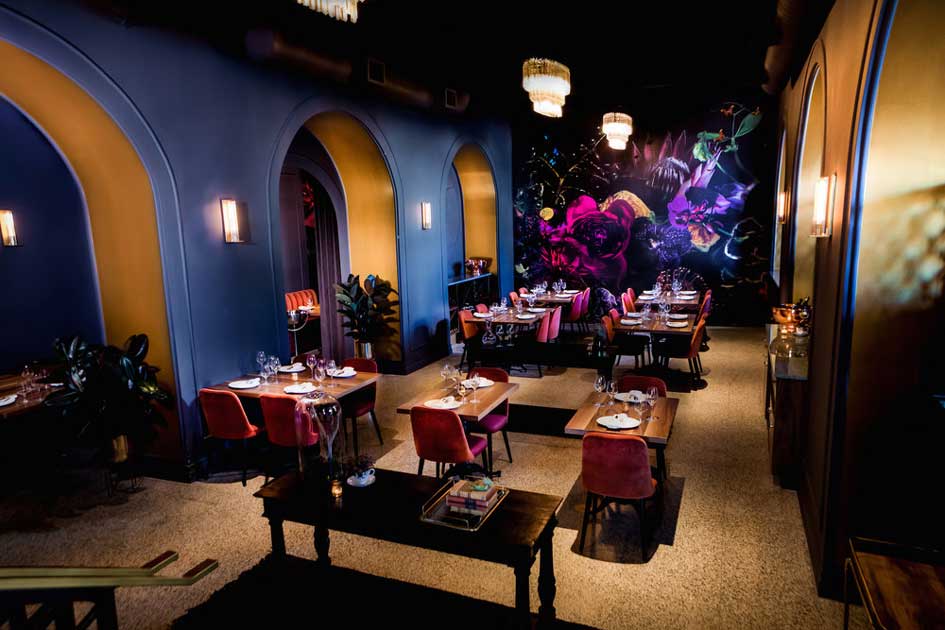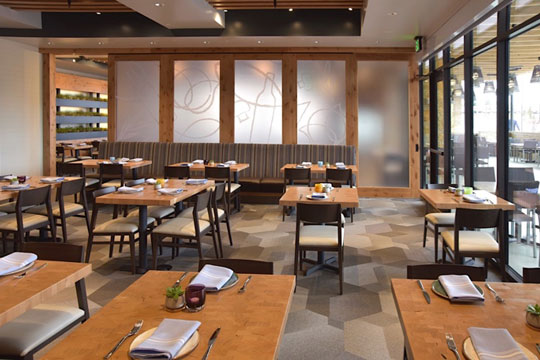Pan Asian Restaurant Islamabad: Discover Exquisite Asian Food
Pan Asian Restaurant Islamabad: Discover Exquisite Asian Food
Blog Article
Savor Genuine Asian Cuisine With a Pan-Asian Spin for a Cooking Adventure
Beginning on a culinary journey through genuine Eastern food, boosted with a Pan-Asian spin, supplies an unique opportunity to check out the abundant tapestry of tastes that specify the area's diverse culinary customs. As you contemplate these attracting recipes, consider the social stories and historical influences that form them, each bite offering a tale waiting to be found. Romantic restaurants Islamabad.

Discovering Pan-Asian Tastes
In the world of global gastronomy, Pan-Asian cuisine stands apart for its remarkable variety and the harmonious interplay of tastes from different Eastern cultures. This cooking approach commemorates the one-of-a-kind components and abundant traditions discovered throughout the continent, creating a tapestry of preferences that is both interesting and enjoyable. Key to Pan-Asian cuisine is its capacity to balance contrasting tastes-- sweet, salty, spicy, and sour-- while highlighting the quality and high quality of each active ingredient.
From the umami-rich soy sauce of Japan to the fiery chili peppers of Thailand, Pan-Asian cuisine supplies a comprehensive combination of tastes. These components are typically incorporated in inventive ways, improving meals with layers of intricacy. For example, making use of aromatic natural herbs such as lemongrass and cilantro, usual in Vietnamese and Thai food, includes a revitalizing brightness to dishes, while the consolidation of coconut milk provides a velvety, rich structure.
The focus on fresh fruit and vegetables and aromatic seasonings makes sure that each dish is not just a banquet for the preference buds yet additionally for the detects. Pan-Asian food welcomes restaurants to get started on a cooking trip, exploring the huge and differed landscapes of Oriental gastronomy with every bite.
Combination Dishes to Try
While Pan-Asian food is commemorated for its standard flavors, the modern-day culinary landscape is progressively embracing blend dishes that mix these classic components with influences from various other regions. This cutting-edge method not just honors the rich heritage of Eastern culinary arts yet likewise presents novel preference experiences that attract contemporary tastes buds.
A prime example of such a blend recipe is the Korean-Mexican taco, where marinaded bulgogi beef is wrapped in a cozy tortilla, topped with kimchi and a zesty gochujang-infused salsa. This combination marries the bold, savory tastes of Korea with the lively, fresh aspects of Mexican food. Likewise, sushi burritos have actually gotten appeal, joining together the fragile artistry of Japanese sushi with the passionate, hand-held comfort of a burrito, commonly featuring combination active ingredients like tempura shrimp and avocado with a drizzle of wasabi mayo.
One more notable meal is Thai curry ramen, which instills the luscious, aromatic spices of Thai curry into the calming brew of conventional Japanese ramen, producing an unified mix that entices the senses. These fusion meals expand past plain novelty; they represent a culinary dialogue between societies, encouraging exploration and advancement on the planet of Pan-Asian food.
Important Components and Flavors
To genuinely value Pan-Asian cuisine, one need to understand the vital components and spices that form its structure. This varied culinary design attracts from a rich tapestry of Asian practices, using a harmonious blend of tastes and structures.
Aromatic elements are crucial, with ginger, lemongrass, and garlic being ubiquitous throughout different Pan-Asian recipes. These active ingredients offer an aromatic base that boosts the intricacy of flavors. Flavors such as star anise, cardamom, and cinnamon present warmth and personality, echoing impacts from regions like China and India.

Food Preparation Techniques and Tips
Mastering the art of Pan-Asian food calls for familiarity with its distinctive food preparation strategies, each adding to the lively tapestry of tastes this cooking custom is celebrated for. Central to these techniques is the stir-fry, a donatos near me rapid food preparation strategy that preserves the dietary honesty and vivid colors of components. Using a frying pan, the stir-fry technique permits also warmth circulation, important for accomplishing the characteristic structure and flavor balance of Pan-Asian meals.
One more essential method is steaming, specifically widespread in Chinese food. This mild approach maintains the natural tastes and nutrients of active ingredients, making it optimal for fish and shellfish and veggies. Dumplings, a beloved staple, typically benefit from steaming, causing soft, delicious textures.
Grilling, also essential, presents smoky depths to recipes such as Oriental bulgogi or Japanese yakitori arbys near me (asian restaurant isb). This strategy typically includes seasoning components, allowing flavors to pass through deeply before food preparation over an open fire or warmer
Lastly, understanding the art of balancing flavors-- pleasant, sour, salty, bitter, and umami-- is crucial. Effectively layering these components can elevate a recipe from average to amazing, using a complex and pleasing culinary experience that embodies the significance of Pan-Asian cuisine.
Dining Experiences Worldwide
Across the world, Pan-Asian food uses an unrivaled eating experience, celebrated for its abundant tapestry of flavors and lively presentations. This cooking phenomenon has gone beyond cultural borders, recording the hearts and tastes of food lovers worldwide. In cosmopolitan cities like New York, London, and Sydney, Pan-Asian dining establishments work as fusions where cooking traditions from Thailand, Japan, China, and past converge, supplying restaurants with an eclectic mix of meals that highlight the region's variety.
The worldwide charm of Pan-Asian food depends on its ability to provide both credibility and technology. Cooks masterfully marry conventional active ingredients such as lemongrass, soy sauce, and miso with modern strategies, leading to meals that are both familiar and refreshingly new. This fusion permits diners to embark on a cooking trip that values heritage while welcoming modernity.
Moreover, dining experiences are boosted via attentively made settings that mirror the principles of Pan-Asian visual appeals. From minimalist Japanese-inspired interiors to vibrant Thai-themed rooms, each dining establishment supplies an one-of-a-kind setting that matches the culinary offerings. Consequently, patrons are not just eating navigate to this site a meal however partaking in a cultural experience, making Pan-Asian eating an absolutely worldwide phenomenon.
Conclusion
The expedition of Pan-Asian food uses a profound understanding of the intricate interaction of tastes and culinary practices throughout Asia. By welcoming blend recipes such as Thai curry ramen and sushi burritos, the cooking journey not just highlights the versatility of traditional ingredients but likewise showcases innovative modern-day strategies. This gastronomic journey, enhanced by crucial seasonings and cooking approaches, gives an one-of-a-kind chance to appreciate the multiculturalism and culinary virtuosity that define Pan-Asian food on an international scale.
Beginning on a cooking trip with genuine Oriental food, enhanced with a Pan-Asian spin, provides an one-of-a-kind chance to discover the rich tapestry of tastes that define the region's varied culinary customs.In the world of worldwide gastronomy, Pan-Asian food stands out for its remarkable variety and the unified interplay of tastes from various Oriental societies. Key to Pan-Asian food is its capacity to balance contrasting tastes-- sweet, salted, spicy, and sour-- while highlighting the quality and top quality of each active ingredient.

Report this page